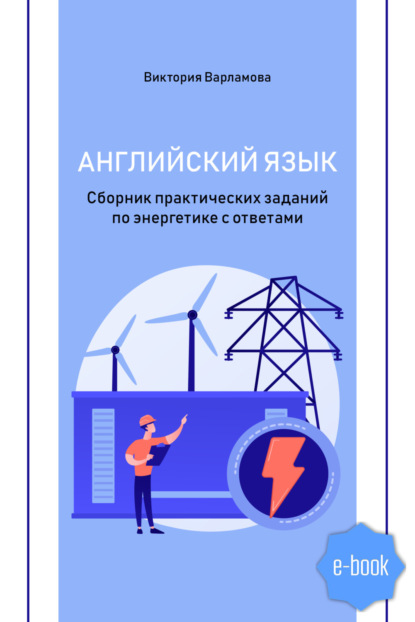По всем вопросам обращайтесь на: info@litportal.ru
(©) 2003-2024.
✖
Английский язык. Сборник практических заданий по энергетике с ответами
Настройки чтения
Размер шрифта
Высота строк
Поля
6. эластичность и плотность ____________________________________
7. частотный диапазон __________________________________________
8. частота звуковой волны ______________________________________
9. скорость звука ________________________________________________
10. плотность среды _____________________________________________
11. частота звука ________________________________________________
2.6. Вставьте в пропуски предлоги: through/in/from, где необходимо.
1. Sound waves cannot pass _______ a vacuum.
2. All sounds originate _______ vibrating objects.
3. The vibrating objects are then passed on _______ a medium.
4. Frequency can be measured _______ physically.
5. The human ear is sensitive to sound _______ the frequency range ______ about 20 Hz.
6. The intensity of sound is measured _______ terms of the amount of power.
__________________________________________________________________
Through — сквозь/через; in — в; from — от;
__________________________________________________________________
2.7. Дайте ответы на вопросы по тексту:
1. What originates from vibrating objects?
2. How can all living beings hear sounds?
3. What are the types of waves in physics?
4. What is intensity of sound?
5. How does sound depend on medium and temperature?
2.8. Переведите предложения на русский язык письменно:
1. A sound wave consists of a series of alternate compressions and rarefactions of medium.
2. Alternate compression and rarefaction transmit kinetic energy through a medium which they pass.
3. Sound can’t pass through a vacuum.
4. Vocal cords in human throat, the skin of a drum or the strings of a violin are good examples of vibrating objects.
5. Each complete wave cycle is made up of one compression and one rarefaction.
Тема 3. Энергия излучения
3.1. Найдите перевод терминов
3.2. Найдите прилагательное в каждой группе слов. Переведите
a) frequency, velocity, activity, visible, density;
b) to travel, to vary, nature, natural, naturally;
c) wavelength, field, fundamental, vacuum, ray;
d) medium, photon, to emit, density, magnetic;
e) speed, space, various, to consist of, molecule;
f) air, metal, ray, constant, frequency, velocity;
g) radiation, to call, electromagnetic, slowly, wave;
3.3. Прочитайте и переведите текст:
Text: “Radiant Energy”.
Energy may take various forms — sound, chemical, and electrical energy, for example.
Nature and properties of radiant energy. The various forms of radiant energy have many common characteristics, the most fundamental of which concerns their nature. They are all wave motion, consisting of varying electric and magnetic fields, but they can also be considered as being made up of “particles,” or quanta, of energy called photons. Radiant energy therefore has a dual wave/particle nature. The most important forms of electromagnetic radiation are visible and infrared light for the life.
Another basic characteristic of electromagnetic radiation is the fact that it does not need a medium in which to travel, and so it can travel through vacuum of space. But the various forms of radiation can also travel through other mediums: light travels through air, water, and glass, for example, and even pass through metal; that is to say, even a metal is “transparent” to X-rays and gamma rays.
In a vacuum, all forms of electromagnetic radiation travel at the same constant velocity — called the speed of light. In other transparent mediums, they travel more slowly, the velocity depending on the wavelength of the radiation and, generally, on the density of the medium. In other mediums, different wavelengths travel at slightly different velocities. The longer the wavelength, the faster the radiation travels. So in the case of visible light, red light travels faster than blue light in any particular transparent medium does.
The various types of radiant energy have different wavelengths and frequencies. These two characteristics multiplied by the frequency are equal to the velocity. Because the velocity is constant in any particular medium, wavelength and frequency are inversely proportional to each other; the longer the wavelength, the lower the frequency is, and vice versa.
3.4. Найдите предложение, содержание которого не соответствует теме и смыслу текста.
1. Energy may take various forms — sound, chemical and electrical energy, for example.
2. The various forms of radiant energy have many common characteristics, the most fundamental of which concerns their nature.
3. Another basic characteristic of electromagnetic radiation is the fact that it does not need a medium in which to travel.
4. In a vacuum all forms of electromagnetic radiation travel at the same constant velocity.





